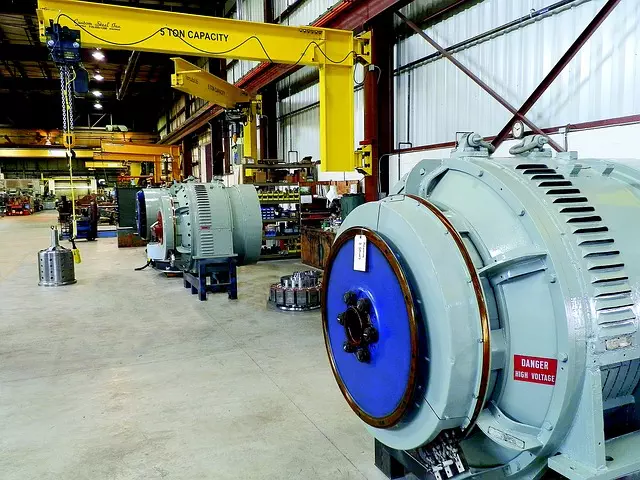Residential foundation repair is crucial for maintaining home safety and stability. Signs like uneven floors, tilted walls, or stuck doors indicate potential foundation issues caused by soil settlement, water damage, or poor construction. Common repairs include underpinning and piecing, while advanced technologies like helical piles offer innovative solutions. Prompt action prevents further damage; regular inspections, moisture management, and soil reinforcement are proactive measures for long-term stability.
“Unstable walls and ceilings can be a homeowner’s worst nightmare, indicative of deeper issues with residential foundation repair. This comprehensive guide delves into the fundamentals of understanding and addressing these problems. We’ll explore common signs of shifting structures, uncover underlying causes from soil conditions to improper construction, and navigate the repair process.
From evaluating damage to embracing modern techniques and long-term prevention strategies, this article equips you with knowledge on securing a stable foundation for years to come, focusing on effective residential foundation repair solutions.”
Understanding Residential Foundation Repair: The Basics

Residential foundation repair is a critical aspect of maintaining a safe and stable home. It involves addressing issues with the structural support system beneath a residence, which includes the foundation walls and floor. Over time, various factors such as soil settlement, water damage, or faulty construction can cause cracks, dips, or unevenness in these elements. Homeowners might notice signs like uneven floors, tilted walls, or doors that stick, indicating potential foundation problems.
Understanding the basics of residential foundation repair is essential for homeowners to recognize when professional intervention is required. Common methods include underpinning, where additional support beams are installed to stabilize settling foundations, and piecing, which involves repairing or replacing individual damaged parts of the foundation structure. Modern technology offers advanced solutions like helical piles, a type of metal screw that can be screwed into the ground to provide added support for sagging foundations.
Identifying Signs of Shifting Walls and Ceilings

Shifting walls and ceilings can be a concerning issue in any home, often indicating underlying problems with the structure’s foundation. Residents may notice subtle signs that something is amiss, such as cracks appearing on walls or ceilings, especially near corners or joints. These cracks might be hairline thin or slightly wider, but they could indicate significant movement within the building. Another common symptom is uneven or bulging walls, which can be a result of soil settlement or structural instability.
If you suspect issues with your home’s integrity, it’s crucial to contact professionals specializing in residential foundation repair. They can inspect your property and identify the root causes, whether it’s poor soil conditions, faulty construction, or settling foundations. Early detection is key to preventing further damage and ensuring the safety and stability of your living space.
Common Causes of Foundation Movement

Foundation movement is a common issue in residential properties, often requiring professional intervention from experts in residential foundation repair. Several factors contribute to this problem, and understanding these causes is essential for homeowners and builders alike. One of the primary reasons for foundation movement is soil conditions. Different types of soil have varying levels of stability and water retention, which can cause the ground to shift and settle unevenly over time. For instance, expansive clay soils tend to swell when they absorb water, exerting pressure on structures above, leading to cracks in walls and floors.
Another significant cause is moisture intrusion. Excessive rainfall or improper drainage systems can lead to water accumulation around the foundation, causing it to expand and contract. This movement can result in severe structural damage, including heave (when the soil pushes upward) or settle (when the ground sinks). Poorly designed or installed footings and supports can also contribute to foundation issues. Inadequate spacing between support beams or improper depth can make a structure more susceptible to movement, especially in areas with high water tables or active tectonic activity.
Evaluating Damage and Repair Options

When dealing with shifting walls and ceilings, the first step is evaluating the extent of damage. This includes assessing cracks in foundations, uneven floors, or any signs of structural instability. A professional inspection is crucial to pinpointing the root cause, whether it’s due to soil settlement, poor initial construction, or underground water issues. Identifying these factors determines the most effective repair method for a residential foundation repair.
Repairs can range from minor adjustments and cracks sealing to more extensive work like underpinning or replacing sections of the foundation. Modern techniques offer non-invasive solutions, such as piering and pushing, which realign structures without disrupting the surrounding area. For severe cases, complete foundation replacement might be necessary, ensuring a sturdy and stable structure for years to come.
Modern Techniques for Stable Solutions

In today’s world, residential foundation repair is no longer a one-size-fits-all endeavor. Modern techniques have emerged that offer stable and lasting solutions for shifting walls and ceilings—a common issue in older homes or those built on unstable soil. One revolutionary approach involves advanced polymer injection, which strengthens structural elements without the need for extensive demolition. This method is particularly effective for repairing cracks and preventing further damage caused by settling or earth movement.
Another game-changer is the integration of smart sensors that monitor ground movements and environmental conditions in real time. These sensors trigger automated responses, such as adjusting foundation support systems, thus mitigating potential issues before they become costly repairs. This proactive approach ensures stability and peace of mind for homeowners, guaranteeing that their structures remain secure and sound over time.
Long-Term Prevention Strategies for Future Peace of Mind

To ensure long-term peace of mind, implementing preventive measures for residential foundation repair is paramount. Regular inspections are key; identifying issues early can prevent small problems from escalating into costly repairs. Homeowners should be vigilant about checking for signs of shifting walls, cracked ceilings, or uneven floors, as these could indicate foundational instability.
Additional strategies include addressing moisture problems, as water can erode the soil around a home’s foundation, leading to settlement. Proper drainage and sealing vulnerabilities in the basement or crawl space are essential. Moreover, reinforcing the soil through measures like deep foundations or pilings can offer long-lasting protection against shifting walls and ceilings, promoting a stable and secure residential environment.
